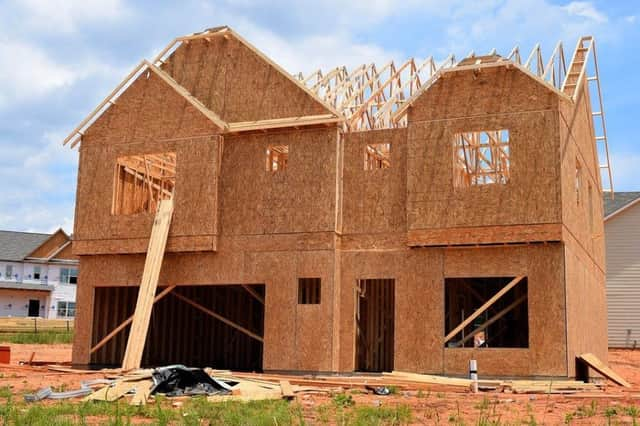Fewer new homes built in Mansfield, Ashfield, Newark and Sherwood than previous year


About 210 dwellings were constructed from scratch from April 2017 to March 2018, a drop of 22% on the same period 2016-2017
Across England, new house building activity rose by 8.5% from April 2017 to March 2018.
Advertisement
Hide AdAdvertisement
Hide AdPrivate developers built most of the new residential houses - about 5%. Housing associations built the rest.
Besides the number of homes completed, building started on 180 new homes in Mansfield from April 2017 to March 2018, up from 170 over the 2016-2017 financial year.
About 160 of these ongoing residential projects are financed by private developers.
In Ashfield, About 290 dwellings were built from scratch, 37% fewer than over the same period in 2016.
Advertisement
Hide AdAdvertisement
Hide AdPrivate developers built most of the new residential houses - about 7%. Housing associations built the rest.
Besides the number of homes completed, building started on 230 new homes in Ashfield from April 2017 to March 2018, down from 300 over the 2016-2017financial year.
About 220 of these ongoing residential projects are financed by private developers. In Newark and Sherwood district, about 310 new dwellings were built, 30% fewer than over the previous financial year.
Private developers built most of the new residential houses - about 16%. Housing associations built the rest.
Advertisement
Hide AdAdvertisement
Hide AdBesides the number of homes completed, building started on 310 new homes in Newark and Sherwood from April 2017 to March 2018, down from 350 over the 2016-2017 financial year.
About 280 of these ongoing residential projects are financed by private developers.
This data doesn’t take into account conversions of houses into several flats or changes of use from an office to a dwelling.
Lindsay Judge, senior policy analyst at the Resolution Foundation, a think-tank that works to improve the living standards, said the housing market cannot rely solely on the private sector to increase the supply of dwellings.
Advertisement
Hide AdAdvertisement
Hide Ad“Just as important as hitting housebuilding targets is delivering the right kind of homes. That means vastly increasing the proportion of genuinely affordable homes, and not relying solely on the private sector to boost housing supply.
“But housing associations and local authorities need more money if they are to deliver more affordable homes, which requires central Government to give them larger grants, extend their borrowing powers or allow them to raise additional funds locally for building.
“If the Government really wants to get to grips with Britain’s housing crisis, it also needs to focus on the fastest growing tenure, private rented accommodation.
“Recent plans to scrap letting fees and extend tenancy terms are welcome. But ministers must go further to improve the quality and security in private rented accommodation, not least as a record number of children are now living in privately rented homes.”
Advertisement
Hide AdAdvertisement
Hide AdFrom April 2017 to March 2018, around 160,470 new dwellings were completed in England, far behind the government’s goal of supplying 300,000 new homes every year to meet the demand. About 82% of these new dwellings were built by private enterprises.
Taking a long view, house building has been mostly decreasing since the 1960s. The early years of this decade saw house building at its lowest peacetime level since the 1920s.
Source: https://www.gov.uk/government/statistical-data-sets/live-tables-on-house-building.